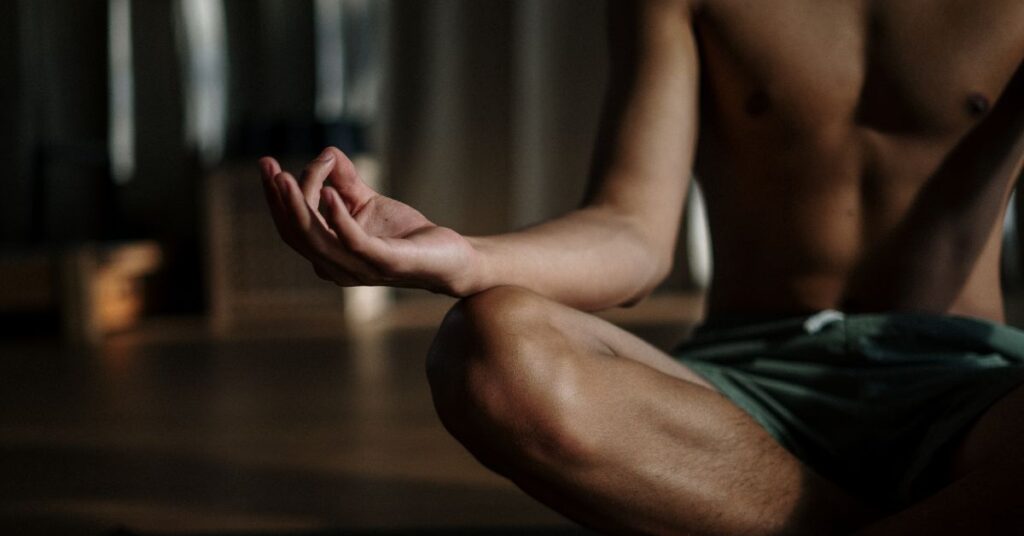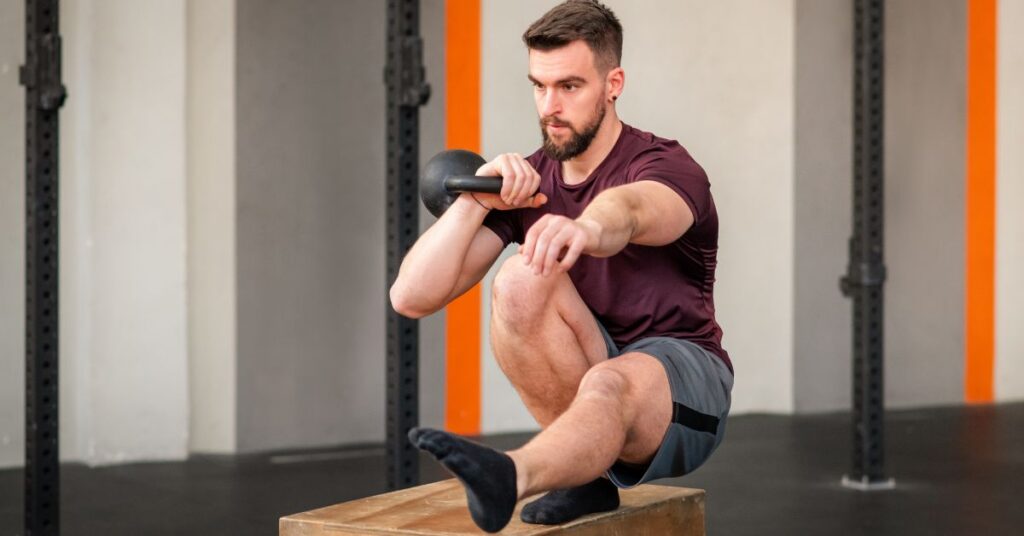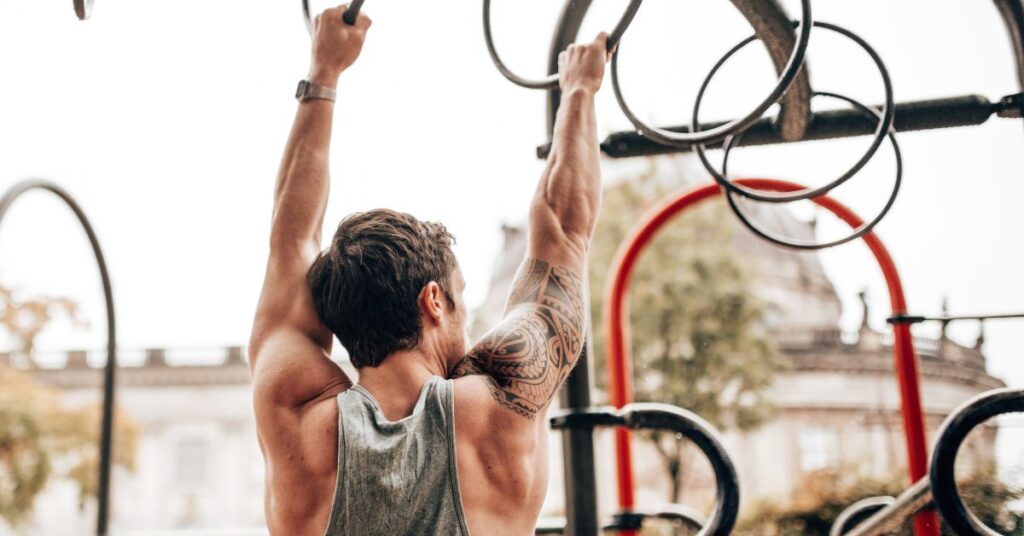10 Essential Beginner Calisthenics Exercises are Push-ups for upper body, Squats for lower body, Plank for core strength, Lunges for leg balance, Mountain Climbers for cardio-core, Burpees for full-body burn, Jumping Jacks for warm-up, Wall Sit for endurance, High Knees for agility, and Bear Crawl for coordination.
Beginner calisthenics workout routines offer an effective and accessible solution for your goal to build strength, improve flexibility, or simply get fit without expensive gym equipment. This comprehensive guide will walk you through everything you need to know about getting started with calisthenics and achieving your fitness goals through bodyweight exercises.
Table of Contents
10 Beginner Calisthenics Workout: Complete Beginner Exercises
Beginner calisthenics workout provides foundational bodyweight training that builds functional strength, improves flexibility, and enhances overall fitness without requiring equipment. These fundamental movements develop muscle coordination, core stability, and cardiovascular endurance while establishing proper movement patterns essential for advanced exercise progression.
10 Essential Beginner Calisthenics Exercises
| Exercise Name | Primary Muscles | Difficulty Level | Sets | Reps | Rest |
| Push-ups | Chest, Triceps, Shoulders | Beginner | 3 | 8-15 | 60s |
| Squats | Legs, Glutes | Beginner | 3 | 12-20 | 45s |
| Plank | Core, Shoulders | Beginner | 3 | 20-60s | 60s |
| Lunges | Legs, Glutes, Core | Beginner | 3 | 10-15 each | 45s |
| Mountain Climbers | Core, Cardio | Beginner-Intermediate | 3 | 10-20 each | 45s |
| Burpees | Full Body | Intermediate | 2-3 | 5-12 | 90s |
| Jumping Jacks | Cardio, Legs | Beginner | 3 | 15-30 | 30s |
| Wall Sit | Legs, Glutes | Beginner | 3 | 15-45s | 60s |
| High Knees | Cardio, Legs | Beginner | 3 | 20-30s | 30s |
| Bear Crawl | Full Body, Core | Intermediate | 2-3 | 10-20 steps | 60s |
1. Bear Crawl
Bear Crawl challenges full-body coordination and strength through quadrupedal movement pattern. Maintain hands and feet contact with ground, knees hovering slightly above surface. This exercise builds core stability, shoulder strength, and coordination while improving mobility and providing unique movement challenge that enhances overall functional fitness capacity.
2. Push-ups
Push-ups form the cornerstone of upper body calisthenics, targeting chest, triceps, and shoulders through controlled pressing movements. Start with knee push-ups if needed, focusing on proper form with straight body alignment. This fundamental exercise builds functional pushing strength essential for daily activities and advanced movements.
3. Squats
Squats develop lower body strength and mobility through natural sitting and standing patterns. Keep feet shoulder-width apart, chest up, and knees tracking over toes. This exercise strengthens quadriceps, glutes, and hamstrings while improving hip flexibility and functional movement quality for everyday activities and sports performance.
4. Plank
Plank builds core stability and endurance through isometric contraction of deep abdominal muscles. Maintain straight body line from head to heels, engaging core muscles throughout hold. This exercise strengthens the entire core system while improving posture and providing foundation strength for all other calisthenics movements.
5. Lunges
Lunges enhance unilateral leg strength while improving balance and coordination through single-leg movement patterns. Step forward, lowering back knee toward ground while keeping front knee over ankle. This exercise develops functional strength, corrects muscle imbalances, and improves hip flexibility essential for walking and running activities.
6. Mountain Climbers
Mountain Climbers combine cardiovascular conditioning with core strengthening through dynamic alternating leg movements. Maintain plank position while driving knees toward chest alternately. This exercise elevates heart rate while building core endurance, making it excellent for fat burning and cardiovascular fitness development within strength training sessions.
7. Burpee
Burpees provide comprehensive full-body conditioning through combination of squat, plank, push-up, and jump movements. This challenging exercise builds strength, power, and cardiovascular endurance simultaneously. Start with modified versions, gradually progressing to full movement as fitness improves. Excellent for metabolic conditioning and overall fitness development.
8. Jumping Jacks
Jumping Jacks offer simple yet effective cardiovascular exercise while engaging multiple muscle groups through coordinated arm and leg movements. This classic exercise improves coordination, elevates heart rate, and provides excellent warm-up or cardio intervals. Perfect for beginners developing basic movement patterns and cardiovascular base fitness.
9. Wall Sit builds
Wall Sit builds isometric leg strength and endurance through sustained squatting position against wall support. Maintain thighs parallel to ground, back flat against wall. This exercise develops mental toughness alongside physical strength, targeting quadriceps and glutes while improving muscular endurance and lower body stability for functional activities.
10. High Knees
High Knees provide dynamic cardiovascular exercise while improving running mechanics and lower body power. Drive knees toward chest alternately while maintaining upright posture and quick cadence. This exercise enhances coordination, builds leg strength, and improves cardiovascular fitness while serving as excellent warm-up for other activities.
These resistance band workouts for men are perfect for strength, flexibility, and full-body conditioning—anytime, anywhere.
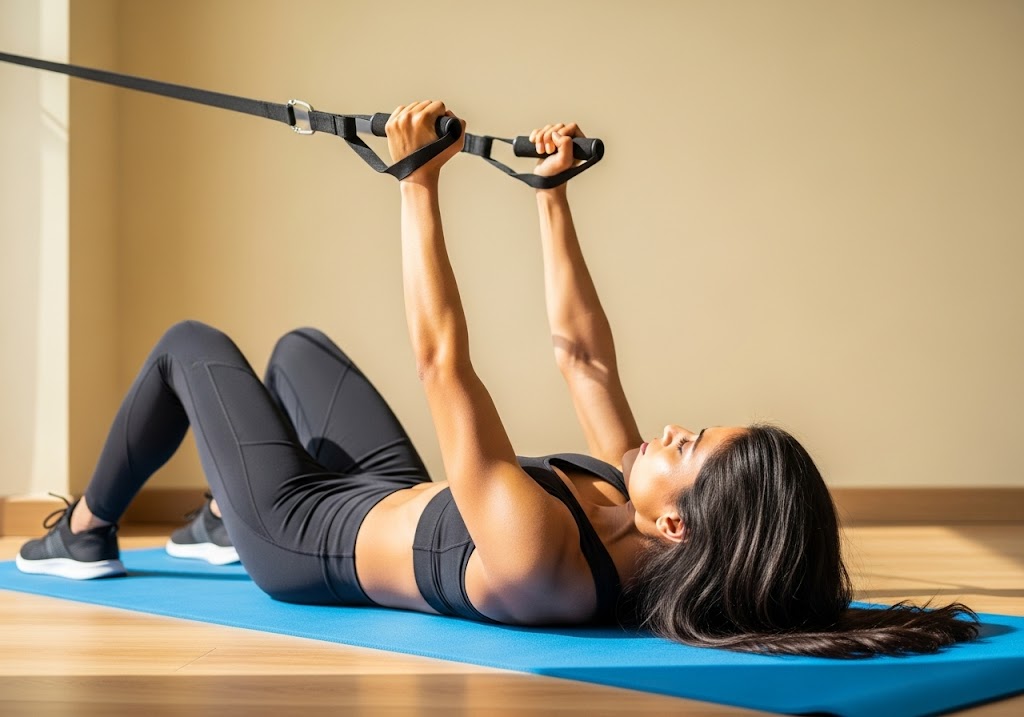
What is Calisthenics? Understanding the Basics
Think of calisthenics as your body’s natural gym – it’s a fitness approach that transforms everyday movements into strength-building exercises. At its core, basic calisthenics workout uses your body’s weight as the primary resistance tool, creating a symphony of movement that builds strength, enhances flexibility, and improves coordination. What sets it apart from conventional gym workouts is its focus on fluid, multi-dimensional movements that mirror how we naturally use our bodies in daily life. Whether you’re pushing, pulling, squatting, or balancing, each movement in basic calisthenics workout engages multiple muscle groups in harmony, creating a more integrated approach to fitness.
See the real numbers in cycling for 30 minutes burns how many calories and get tips to maximize fat loss.
A Historical Overview of Calisthenics: From the 19th Century to Today
The story of calisthenics workout is as fascinating as it is ancient. While many associate it with modern street workout culture, its origins trace back to ancient military training. Persian warriors were known to use bodyweight exercises for combat preparation, while Spartan soldiers incorporated similar techniques into their legendary training regimens.
What’s particularly interesting is how calisthenics evolved through different eras. In Victorian times, it became a cornerstone of physical education, especially for women’s fitness programs. The early 20th century saw calisthenics become integral to military training worldwide, with the US Army adopting it as a standard training protocol during World War II. Today, it has transformed into a diverse discipline, incorporating elements from gymnastics, parkour, and contemporary fitness science.
Explore these effective resistance band workouts for women designed for all fitness levels.
Why Calisthenics is the Perfect Workout for All Fitness Levels?
The genius of calisthenics lies in its adaptability to any fitness level through what experts call “progressive calisthenics.” Picture basic calisthenics workout as a ladder where each rung represents a different difficulty level of the same exercise. For instance, someone who can’t perform a traditional push-up might start with wall push-ups, progress to knee push-ups, and eventually master full push-ups.
This scalability makes basic calisthenics workout uniquely inclusive:
- Beginners can start with simplified versions of exercises
- Intermediate practitioners can focus on perfecting form and increasing repetitions
- Advanced athletes can explore challenging variations like one-arm push-ups or muscle-ups
What truly sets basic calisthenics workout apart is its built-in progression system. Unlike weight training, where progress is measured by adding more plates to a bar, basic calisthenics progression focuses on mastering increasingly challenging movement patterns. This approach not only builds strength but also develops body awareness, balance, and coordination – skills that translate directly into improved performance in daily activities and other sports.
Moreover, the learning curve in basic calisthenics workout is both challenging and rewarding. As practitioners advance, they discover that each movement has countless variations, creating an endless path for growth and improvement. This perpetual opportunity for advancement keeps motivation high and prevents the plateau effect common in other forms of exercise.
These Arm Workouts with Dumbbells for Women are perfect for strength, tone, and confidence at any level.
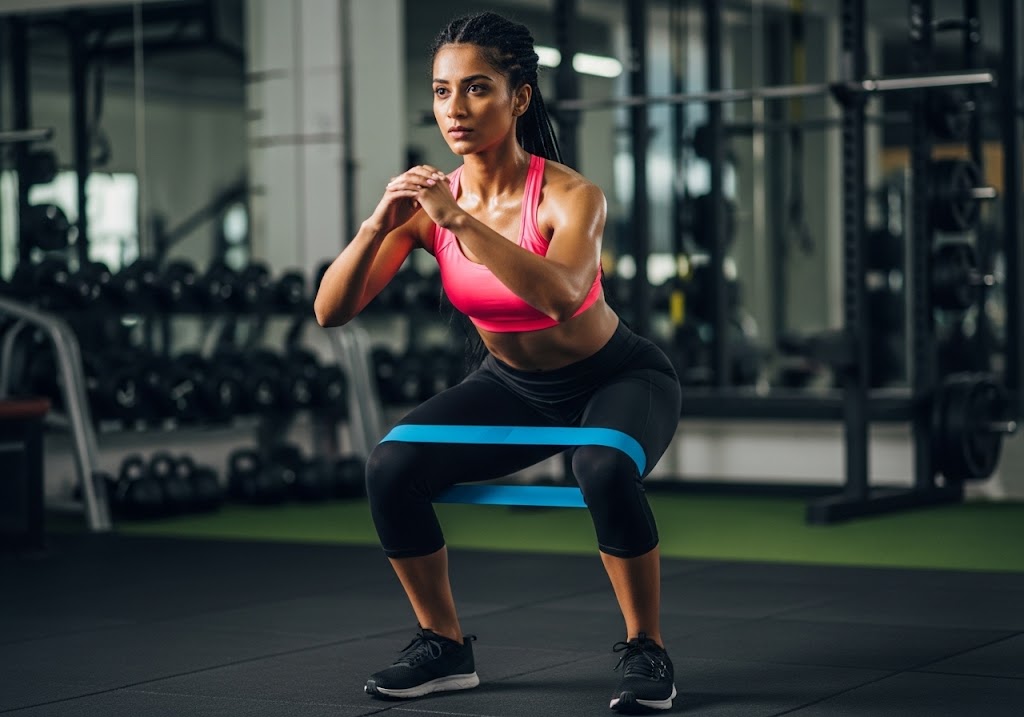
Benefits of Beginner Calisthenics Workout
A basic calisthenics workout provides an accessible, efficient, and powerful approach to building strength, enhancing mobility, and supporting long-term fitness goals—all without the need for equipment or a gym membership.
1. Build Functional Strength and Endurance through Beginner Calisthenics Workout
Functional strength translates directly to daily activities, improving movement quality and injury prevention. Basic calisthenics exercises target multiple muscle groups simultaneously, building coordinated strength while enhancing cardiovascular endurance. This foundational approach develops real-world applicable fitness through natural movement patterns that strengthen your entire kinetic chain.
What You Gain in Basic Calisthenics Workout:
- Improved Neural Adaptation: Enhances the brain-muscle connection for better performance
- Better Muscle Coordination: Trains different muscles to work together effectively
- Increased Time Under Tension: Keeps muscles engaged longer through natural movement patterns
- Greater Force Production: Develops strength across multiple planes of motion
This focus on relative strength—your ability to control your body in space—translates directly to real-world function, from daily tasks to athletic performance. For muscle-specific movements, check out our Calisthenics Biceps Exercises guide.
Get big results with these effective Bodybuilding Exercises at Home using just your bodyweight or minimal equipment.
2. Enhance Flexibility and Mobility with Every Move
Calisthenics naturally incorporates dynamic stretching and full range-of-motion movements, simultaneously building strength and flexibility. Unlike isolated gym exercises, bodyweight movements require joint mobility and muscular coordination, creating supple, functional flexibility. Every calisthenics exercise becomes an active stretch, improving movement quality while developing strength.
How Calisthenics Improves Mobility:
- Strength Through Full Range of Motion: Movements like squats and push-ups improve joint mobility in the hips, shoulders, and spine
- Dynamic Mobility Training: Exercises such as bear crawls, walking lunges, and handstand drills improve coordination and joint range in motion
- Balanced Muscle Development: Ensures equal attention to pushing and pulling exercises, leading to better posture and joint health
To explore more movements that enhance flexibility and functionality, explore our Calisthenics Exercises resource
3. Accessibility and Simplicity: The Strength of Beginner Calisthenics Workout
Calisthenics removes barriers to fitness through its fundamental simplicity and universal accessibility. No equipment, memberships, or complex setups required-just your body and determination. This democratic approach to fitness empowers anyone, anywhere, to begin their strength journey regardless of economic status, location, or experience level.
- Environment-Friendly Options: Train at the park using bars or benches, use home furniture safely for exercises, or do quick routines at the office or in hotel rooms while traveling
- Cost-Efficient Fitness: No equipment or gym membership required, zero maintenance or replacement costs, and a truly lifelong fitness option
- Time-Saving and Flexible: Minimal setup required, easy transitions between exercises, and seamless integration into daily routines
- Community and Consistency: Join online calisthenics groups and challenges, train in local parks with like-minded enthusiasts, and stay motivated through social media support
Why It All Works?: Consistency Through Simplicity
The brilliance of a basic calisthenics workout lies in its ability to remove all excuses. Whether it’s bad weather, limited time, budget constraints, or lack of access to a gym—calisthenics breaks those barriers. When your workout needs nothing but your body and willpower, sticking to a routine becomes second nature.
Try this proven Arm Workout at Home with Dumbbells – simple, effective, and beginner-friendly.
4 Most Easiest & Beginner Calisthenics Workout Exercises
Get started with bodyweight training through these essential basic calisthenics exercises. Perfect for beginners, they help you build strength, control, and endurance-no equipment needed. Ready to go a step further? Check out our Advanced Calisthenics Routine to take your skills to the next level.
1. Push-Ups – Upper Body Foundation
Push-ups serve as the cornerstone exercise for upper body pressing strength, targeting chest, shoulders, triceps, and core simultaneously. This versatile movement offers endless progression possibilities from beginner wall push-ups to advanced one-arm variations. Mastering push-up progressions builds the foundation for all advanced upper body calisthenics skills.
- Form Tips: Hands slightly wider than shoulders, body in a straight line, elbows at 45°, controlled descent, full extension on push
- Progressions: Wall push-ups → Incline push-ups → Knee push-ups → Full push-ups → Tempo push-ups
- Avoid: Sagging hips, flared elbows, short range, dropping head, holding breath
Learn the progression and technique for the how to do a one‑arm push‑up and unlock elite strength with bodyweight training.
2. Squats – Lower Body Strength Builder
Squats develop foundational lower body strength, targeting quadriceps, glutes, hamstrings, and core muscles through functional movement patterns. This fundamental exercise improves hip mobility, ankle flexibility, and overall leg power. Progressive squat variations build toward advanced single-leg movements, enhancing balance, coordination, and unilateral strength for athletic performance.
- Form Tips: Feet shoulder-width apart, neutral spine, knees track toes, weight in heels, descend below parallel if possible
- Progressions: Assisted squats → Box squats → Regular squats → Pause squats → Jump squats
- Avoid: Heels lifting, knees caving in, rounded back
Explore both options in calisthenics vs gym and pick what fits your goals best.
3. Lunges – Balance and Coordination
Lunges enhance single-leg strength, dynamic balance, and hip stability while improving coordination between upper and lower body. This unilateral exercise corrects muscle imbalances, develops functional movement patterns, and builds athletic power. Progressive lunge variations challenge stability, mobility, and strength through multiple planes of movement for comprehensive lower body development.
- Form Tips: Step long, front knee above ankle, back knee hovers close to the ground, hips square
- Variations: Reverse lunges → Walking lunges → Bulgarian split squats → Jumping lunges
- Avoid: Leaning forward, unstable steps, knees going too far forward
Find out exactly How Many Jumping Jacks to Burn 500 Calories and how to make each rep count.
4. Planks – Core and Stability Training
Planks develop isometric core strength, spinal stability, and full-body tension essential for all advanced calisthenics movements. This foundational exercise teaches proper body alignment, improves postural endurance, and builds the stabilization strength required for complex skills. Progressive plank variations challenge core endurance, strength, and coordination through dynamic movement patterns.
- Form Tips: Forearms under shoulders, full-body tension, neutral spine, squeeze glutes and quads
- Progressions: 10–20s holds → 30–60s holds → Limb lifts → Plank walks
- Avoid: Arching back, holding breath, letting hips sag or rise
Try these powerful Calisthenics Leg Exercises to build strength, balance, and endurance using just your bodyweight.
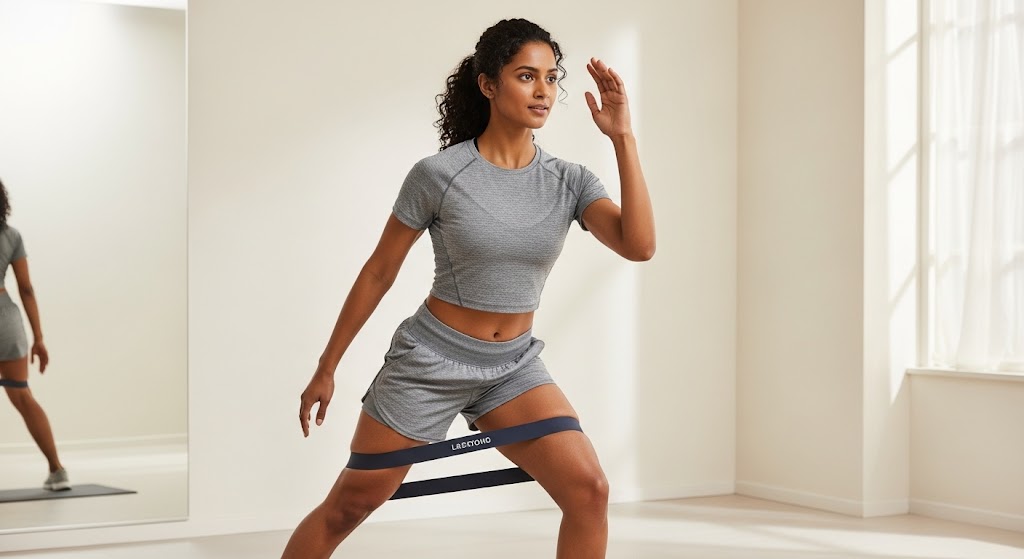
Creating Your First Beginner Calisthenics Workout Plan
Creating your first basic calisthenics workout plan means building a simple, equipment-free routine that includes warm-up, core exercises, skill work, and recovery to develop strength and mobility.
Warm-Up: Prepping Your Body for Movement
A quality warm-up is essential to prime your muscles, joints, and nervous system for any basic calisthenics workout.
Warm-Up Routine
- Cardio Activation (5–7 mins): Jog in place, high knees, butt kicks, jumping jacks, arm circles
- Joint Mobility (3–5 mins): Neck rolls, shoulder rotations, wrist/hip/ankle circles
- Dynamic Movements (5 mins): Leg swings, arm reaches, bodyweight squats, walking lunges, bear crawls
Beginner Basic Calisthenics Workout Routine
A beginner basic calisthenics workout routine is a structured, bodyweight-based program designed to build foundational strength, mobility, and control using simple exercises. Want to optimize your performance and recovery? Explore our Intermittent Fasting Plan designed to support your calisthenics journey.
Foundation Circuit – 3 Rounds
- Push-ups: 5–8 reps (knee or incline for beginners)
- Bodyweight squats: 12–15 reps
- Plank hold: 20–30 seconds
- Alternating lunges: 8–10 reps each leg
- Rest: 90 seconds between rounds
Skill Practice (Between Circuits)
- Wall handstand holds: 3 sets of 10–15 sec
- Support holds on chairs: 3 x 15–20 sec
- Hollow body holds: 3 x 10–15 sec
Movement Integration
- Bear crawls: 3 x 20 feet
- Crab walks: 3 x 20 feet
- Inchworms: 3 sets of 5 reps
Discover the best routine in how many crunches per day-build core strength safely and effectively.
Cool Down: Flexibility and Recovery
The cool down in a basic calisthenics workout helps improve flexibility, reduce muscle soreness, and support recovery through deep breathing and static stretching.
Breathing Reset (2–3 mins)
- Box breathing: Inhale 4 sec → Hold 4 sec → Exhale 4 sec
- Focus on calm, deep breaths to lower heart rate
Static Stretching (10–15 mins)
- Upper Body: Chest, triceps, upper back, shoulder blade squeezes
- Lower Body: Quads, hamstrings, hip flexors, calves (30 sec each)
Recovery Support
- Light walking (5–10 mins)
- Gentle joint rotations
- Self-massage for sore muscles
- Begin rehydration post-workout
This full body calisthenics workout targets every major muscle group – no equipment needed.
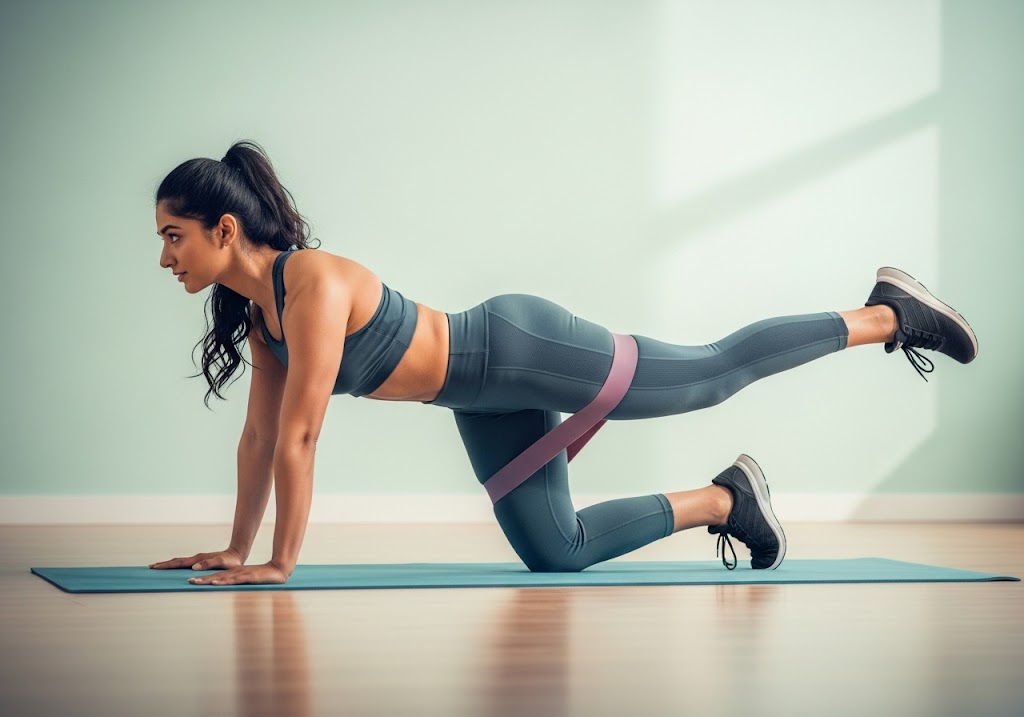
How to Progress in Beginner Calisthenics Workout?
Progressing beyond basic calisthenics requires strategic advancement through increased difficulty, skill-based movements, and complex variations. Focus on mastering harder progressions like archer push-ups, pistol squats, and handstand training. Implement advanced techniques including isometric holds, explosive movements, and combination exercises to continue building strength, coordination, and unlock elite bodyweight skills.
Discover how many calories 15 minutes of running burns and turn your quick run into real results.
Strategic Progressive Overload in Beginner Calisthenics Workout
Strategic progressive overload in calisthenics requires creative intensity manipulation since traditional weight increases aren’t possible. Progress through increased repetitions, advanced exercise variations, slower tempos, greater range of motion, and leverage changes. This systematic approach prevents plateaus, ensures continuous strength gains, and develops advanced skills by gradually challenging the body with progressively demanding bodyweight movements.
| Progression Type | Method | Week 1-2 | Week 3-4 | Week 5-6 |
| Volume-Based | Sets | 2-3 sets | 3-4 sets | 4-5 sets |
| Reps | 8-12 (form focus) | 8-12 (maintain) | 10-15 | |
| Rest | Full recovery | Slightly reduced | Density training | |
| Focus | Form mastery | Volume increase | Add variations |
Intensity Progression Methods
Advanced calisthenics progression relies on manipulating exercise intensity rather than adding external weight. These methods challenge muscles through biomechanical changes, tempo variations, and leverage adjustments. Master these techniques to break through plateaus, develop advanced skills, and continue progressing when basic repetition increases become insufficient for strength development.
| Intensity Method | Technique | Application | Example |
| Tempo Manipulation | Slow Negatives | 4-second lowering phase | Push-ups down in 4 seconds |
| Pause Reps | 2-second hold at bottom | Squat hold at bottom | |
| Explosive Concentrics | Fast upward movement | Jump squats | |
| Range of Motion | Deficit Movements | Increased depth | Deficit push-ups |
| Deep Positions | Full range utilization | Deep squats | |
| Extended Range | Beyond normal ROM | Full-range dips | |
| Leverage Adjustments | Incline/Decline | Change body angle | Feet elevated push-ups |
| Grip Changes | Wide to narrow positions | Diamond push-ups | |
| Unilateral | Single limb variations | Single-leg squats |
Advanced Exercise Variations
Advanced exercise variations transform basic calisthenics movements into elite-level challenges through increased complexity, leverage disadvantages, and unilateral demands. These sophisticated progressions include single-arm push-ups, pistol squats, handstand variations, and muscle-ups. Advanced variations develop exceptional strength, coordination, and skill while providing endless progression opportunities for experienced practitioners seeking new challenges and mastery.
Upper Body Progressions:
Lower body calisthenics progressions focus on building explosive power, functional strength, and single-limb stability. These movements enhance athletic performance, improve daily movement patterns, and develop the large muscle groups essential for overall strength. Advanced progressions challenge balance, coordination, and unilateral strength through increasingly complex movement patterns.
- Push-Up Evolution
- Diamond push-ups
- Archer push-ups
- One-arm push-up progressions
- Planche lean progressions
- Pull Movement Development
- Australian pulls
- Negative pull-ups
- Full pull-ups
- Wide grip variations
Lower Body Advancements:
Upper body calisthenics development emphasizes pushing, pulling, and stabilization strength through progressive overload variations. These exercises build functional pressing power, grip strength, and shoulder stability while improving posture and upper body coordination. Advanced progressions develop impressive strength-to-weight ratios and movement skills that translate to real-world applications.
- Squat Variations
- Jump squats
- Single-leg squat progressions
- Pistol squat preparation
- Plyometric combinations
- Lunge Complexes
- Walking lunge variations
- Jump lunge combinations
- Bulgarian split squat progressions
- Dynamic lunge patterns
Try this effective resistance band workout for triceps to isolate and grow your triceps anywhere, anytime.
Beginner Calisthenics Workout Plan (No Equipment Necessary)
This beginner-friendly routine focuses on fundamental bodyweight movements that build strength, endurance, and coordination. Perfect for those starting their fitness journey, these exercises require zero equipment and can be performed anywhere. Each movement targets multiple muscle groups while developing proper form and movement patterns essential for advanced calisthenics.
| Exercise | Sets | Reps | Rest | Target Muscles |
|---|---|---|---|---|
| Push-ups (modified if needed) | 3 | 8-12 | 60s | Chest, shoulders, triceps |
| Bodyweight Squats | 3 | 12-15 | 60s | Quads, glutes, hamstrings |
| Plank Hold | 3 | 20-30s | 45s | Core, shoulders |
| Lunges (each leg) | 2 | 8-10 | 45s | Legs, glutes, core |
| Mountain Climbers | 3 | 15-20 | 60s | Core, shoulders, cardio |
| Wall Sits | 2 | 20-30s | 60s | Quads, glutes |
| Glute Bridges | 3 | 12-15 | 45s | Glutes, hamstrings |
Warm Up For A Beginner Calisthenics Workout
A proper warm-up prepares your body for exercise by increasing blood flow, raising core temperature, and activating key muscle groups. This routine takes 8-10 minutes and helps prevent injury while improving performance. Dynamic movements gradually increase your heart rate and mobility, ensuring your joints and muscles are ready for the workout ahead.
- Arm Circles: Rotate your arms forward and backward in large circles to warm up the shoulder joints and improve mobility.
- Leg Swings: Hold onto a wall and swing each leg forward and back, then side to side to loosen hip flexors and prepare the legs.
- High Knees: March in place bringing knees up toward your chest to activate the hip flexors and warm up the lower body.
- Butt Kickers: Jog in place bringing your heels toward your glutes to warm up the hamstrings and increase circulation.
- Arm Stretches: Gently stretch your arms across your chest and overhead to prepare the shoulders and improve range of motion.
- Torso Twists: Rotate your upper body left and right with arms extended to warm up the spine and core muscles.
- Light Jumping: Perform gentle jumps or jumping jacks to elevate heart rate and prepare the entire body for exercise.
- Dynamic Stretching: Include leg swings, arm swings, and gentle bodyweight movements to activate all major muscle groups.
Progression Calisthenics Workout
This intermediate routine builds upon basic movements with increased difficulty and volume. Designed for those who’ve mastered beginner exercises, it introduces more challenging variations and longer holds. Progressive overload principles guide this workout, gradually increasing intensity to promote continuous strength and skill development while maintaining perfect form throughout each movement.
| Exercise | Sets | Reps/Duration | Rest | Progression Notes |
|---|---|---|---|---|
| Standard Push-ups | 4 | 12-18 | 90s | Progress to diamond push-ups |
| Jump Squats | 4 | 10-15 | 75s | Add pause at bottom |
| Plank to Push-up | 3 | 8-12 | 90s | Full range of motion |
| Single-leg Glute Bridges | 3 | 10-12 each | 60s | Hold at top for 2s |
| Pike Push-ups | 3 | 6-10 | 90s | Progress toward handstand |
| Bulgarian Split Squats | 3 | 8-12 each | 75s | Use rear foot elevation |
| Side Planks | 3 | 30-45s each | 60s | Add leg raises |
| Burpees | 3 | 6-10 | 2 min | Focus on smooth transitions |
Weekly Beginner Calisthenics Workout
This weekly structure provides balanced training with adequate recovery time between sessions. Each day targets different movement patterns and muscle groups while allowing proper rest for adaptation and growth. The schedule includes three workout days with rest or light activity days in between, promoting consistency while preventing overtraining and burnout.
| Day | Workout Type | Focus Areas | Duration | Notes |
|---|---|---|---|---|
| Monday | Full Body Beginner | All muscle groups | 25-30 min | Start week strong |
| Tuesday | Active Recovery | Light stretching/walking | 15-20 min | Promote recovery |
| Wednesday | Upper Body Focus | Push-ups, planks, pike | 25-30 min | Build upper strength |
| Thursday | Active Recovery | Mobility work | 15-20 min | Prepare for lower day |
| Friday | Lower Body Focus | Squats, lunges, glutes | 25-30 min | Finish week strong |
| Saturday | Full Body Light | Easy movements | 20-25 min | Active recovery |
| Sunday | Rest Day | Complete rest | – | Full recovery day |
Weekly Progression Tips:
- Week 1-2: Focus on form and consistency
- Week 3-4: Increase reps by 2-3 per exercise
- Week 5-6: Add extra set or increase hold times
- Week 7+: Progress to intermediate variations
Safety Tips for Your Beginner Calisthenics Workout
Safety in calisthenics prevents injuries and ensures sustainable progress through proper warm-up protocols, correct form emphasis, and gradual progression principles. Essential safety practices include listening to your body, avoiding ego-driven advancement, maintaining joint mobility, and prioritizing recovery. Smart training habits build long-term success while minimizing injury risks in bodyweight exercise routines.
Use this organized calisthenics diet chart for optimized nutrition during training and recovery.
Start Slow: Listening to Your Body
Starting slow and listening to your body prevents overuse injuries and promotes sustainable progress in calisthenics training. Your body provides valuable feedback through fatigue, soreness, and discomfort signals. Respecting these warnings, progressing gradually, and allowing adequate recovery time builds a strong foundation while preventing setbacks that derail long-term fitness goals and movement quality.
Important guidelines:
- Begin with basic movements
- Focus on proper form
- Progress gradually
- Rest when needed
- Stay hydrated
Avoiding Common Injuries with Proper Form
Proper form is the cornerstone of injury prevention in calisthenics, protecting joints, muscles, and connective tissues from excessive stress. Common injuries like wrist strain, shoulder impingement, and lower back pain stem from poor technique. Prioritizing quality over quantity, maintaining neutral spine alignment, and mastering movement patterns ensures safe, effective training and long-term success.
Injury prevention strategies:
- Master basics before progression
- Maintain proper alignment
- Engage core during exercises
- Avoid overtraining
- Include recovery days
When to Seek Professional Guidance?
Professional guidance becomes essential when experiencing persistent pain, struggling with proper form, hitting training plateaus, or attempting advanced skills. Certified trainers, physical therapists, and movement specialists provide expert assessment, personalized programming, and injury prevention strategies. Seeking professional help accelerates progress, ensures safety, and prevents costly mistakes that could derail your calisthenics journey.
Consider professional help if:
- New to exercise
- Returning from injury
- Unsure about proper form
- Planning advanced progressions
- Having specific fitness goals
Try this intense Calisthenics Ab Workout to sculpt your abs using just your bodyweight – anytime, anywhere.
Conclusion
Basic calisthenics workout routines offer a comprehensive approach to fitness that combines strength, flexibility, and fat-burning benefits in one cohesive package. By starting with proper form and progressively challenging yourself, you’ll build a strong foundation for overall health and wellness. Remember that consistency and patience are key to success in any fitness journey, and calisthenics is no exception.
Ready to start your fitness journey with a basic calisthenics workout that builds real strength and control? At ISC – Indian School of Calisthenics, we specialize in guiding beginners through foundational movements that lay the groundwork for long-term progress. Visit us at SRPF Ground, NH8, Goregaon (E), Mumbai – 400065. For class schedules, personalized coaching, or more details, call +91 77159 53218. Train smart, move better, and unlock your back strength with ISC.
Beginner Calisthenics Workout- FAQs
How often should I do Beginner calisthenics workout?
For beginners, start with 3-4 sessions per week, allowing for rest days between workouts. As you progress, you can increase frequency based on your recovery ability and goals.
Can I build muscle with just calisthenics?
Yes, calisthenics can effectively build muscle through progressive overload and proper nutrition. Focus on increasing difficulty through exercise variations and volume.
How long should a calisthenics workout last?
A typical basic calisthenics workout should last 30-45 minutes, including warm-up and cool-down. Quality of movement is more important than workout duration.
Do I need any equipment to start calisthenics?
No, basic calisthenics requires only your body weight. However, access to a pull-up bar can expand your exercise options.
Can I combine calisthenics with other forms of exercise?
Yes, calisthenics complements other training methods like cardio, yoga, or weight training. Just ensure proper recovery between different types of workouts.
How long before I see results from calisthenics?
With consistent practice, you may notice improvements in strength and endurance within 4-6 weeks. Visual changes typically become apparent after 8-12 weeks of regular training combined with proper nutrition.
Is calisthenics suitable for all age groups?
Yes, calisthenics is scalable and can be adapted for any age or fitness level with proper guidance.
What exercises are included in a Beginner calisthenics routine?
Typical exercises include push-ups, squats, planks, dips, and bodyweight rows—targeting major muscle groups.
Can I do calisthenics at home?
Absolutely. Basic calisthenics requires minimal space and no equipment, making it ideal for home workouts.
Do I need a warm-up before a calisthenics session?
Yes, warming up is crucial to prepare your muscles, prevent injury, and enhance performance during your workout.
